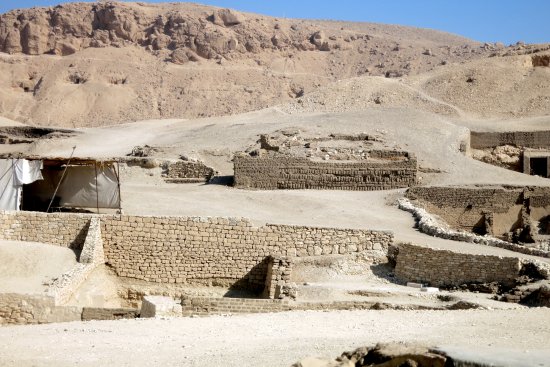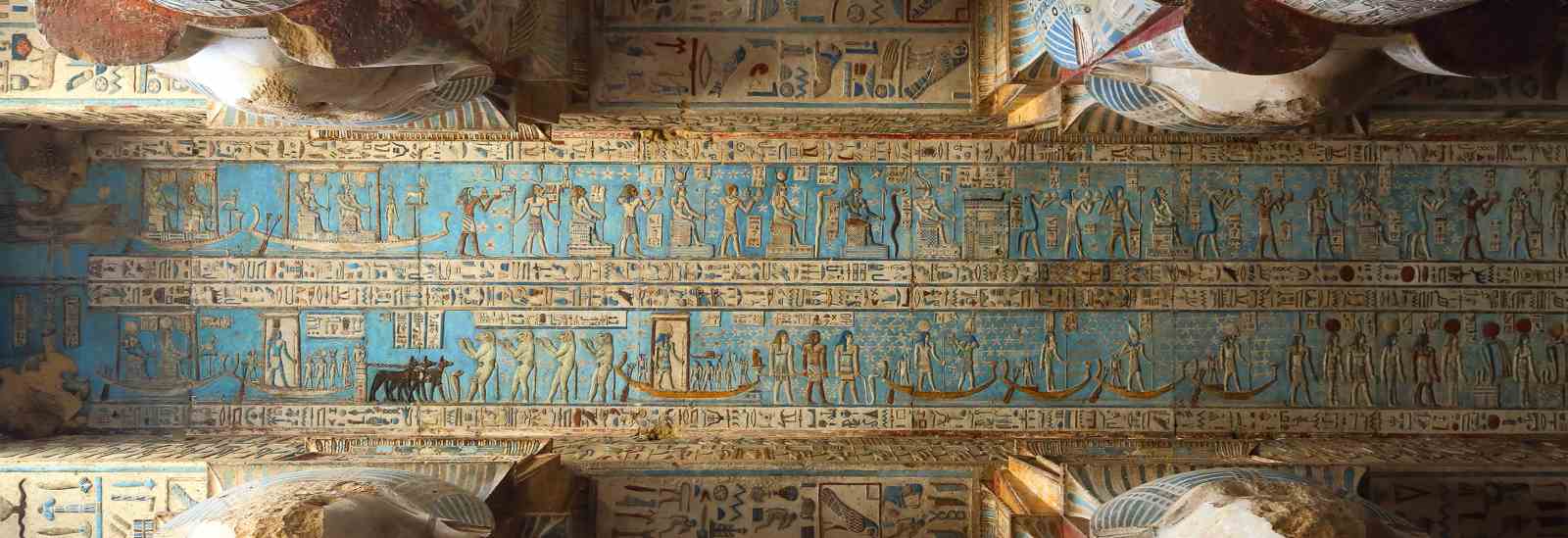- Luxor Attractions
- Shoroq Samir
The valley of the nobles
The definition of Tomb is a closed space to keep the dead in with their possessions. Ancient Egyptians made their tombs more significant and architectural by painting colored scenes on the walls and dividing the tomb into chambers. A tomb mere purpose is maintaining the dead remains, and Egyptians were really district when it comes to their dead because they believed in the afterlife. The most elaborated tombs were build in ancient history were by the ancient Egyptians, especially the ones were build for their kings. The typical Egyptian tomb was mastaba tombs that were divided into ceremonial chamber and burial chamber. The larger room was always made for ceremonies of honoring the dead spirit and the in the smaller room, there would be a statue for the dead man so his spirit can witness the ceremonies as well. Valley of the Kings, queens and the nobles are places in Luxor city that showed the world how Egyptians buried their royals and Nobel men in such sophisticated and artistic way. These hidden underground tombs are designed very carefully and painted with scenes of the afterlife and daily life practices. The tombs of the nobles are the Most that indicate the shift of ancient Egyptian art to be more Amarna during the new kingdom and reflects more daily life scene of the court men and common Egyptian. Since the valley of the Nobles is one of Luxor attractions, travel to Egypt made sure to include it in Nile river cruise packages and Luxor day tours. Nobel tombs are many and well preserved, and we are going to give some details of this breathtaking historical place in case you're visiting Egypt anytime soon.

Valley of the nobles
The valley of the Nobles are tombs made for the sophisticated in the Egyptian courts, high priests leader from the middle and new kingdom. The tombs are simple in design, and all have the same layout. The valley is well preserved and most of its tombs are found intact and not touched. The wall still maintaining it’s the fresh colored scenes of the workers practicing their job in the fields, architects, craftsmen, musicians and daily life from the Egyptian court in general. The tombs of Nobles located in Luxor city, west bank. Each tomb was recognized by a number, maybe the most popular tomb in the valley of the Nobles, the one that belongs to Ramose with the number of 55. The tombs of the Nobles also have other significant tombs like khaemhet and Neferhabef tombs
Tomb of Sennufru
Sennefer was Mayor of Thebes at the time of Amenhotep I. His tomb, TT 96, is eminent for its roof: skilled workers at the time misused the abnormality of its surface to embellish it with vines, thus its name. This tomb is additionally noted for the nature of its craft and for its fine condition of conservation. The present portrayal covers the funerary chamber (TT96B) yet in addition the surface sanctuary (TT96A), still in course of rebuilding..
Tomb of Rekhmire
Tomb 100 is another significant tomb in this burial ground. It had a place with Re-khme–e, who was vizier of Tuthmosis III and Amenhotep II.
This stone cut tomb has sections designed with many painted scenes of the different practices of life in Ancient Egypt. One of the most lovely scenes is the one that speaks to the minister of the court Re-khme-Re, conveying presents and tributes to the King of Egypt and his men. These presents and tributes included things, for example, utensils, horticultural items, and different creatures. One of the most significant content in this tomb is the one which makes reference to the obligations and duties accepted by the minister so as to give the equity a chance to win on Earth.
At the point when you visit the tombs, it is critical to recall the quantity of the tomb you need to visit. Along these lines you can visit precisely what you need to see; else, you will be lost.
Tomb of Nakht
The owner of this tomb was a respectable man who had the title of incredible recorder. He was likewise a cosmologist in the Temple of Amon during the reign of King Tuthmosis IV. His wife was additionally engaged with the exercises carried on in the Temple, as she filled in as a chanter. The tomb is genuinely little yet has the absolute most splendid beautiful scenes. These scenes are very much well preserved.
Tom of Ramose
This is the best tomb by a long shot in the Valley of the Nobles. This wonderful tomb is for ramose, instructor of the city of Thebes who lived during the rules of King Amenhotep III and Akhenaton (or Amenhotep IV) in the eighteenth Dynasty .
Ra-mose lived until the fifth year of the rule of King Akhenaton. Proof demonstrates that this tomb was opened and re-utilized by numerous other Noblemen in a later period, most presumably by the ones who eradicated the names of King Akhenaton of the dividers. The consecrated Priest Ra-mose of Amon Ra had extraordinary power! It is obvious from the style of improvement inside this tomb, that he delighted in an interesting position.
The most fascinating piece of the tomb was for the admirers of the sun plate, the God Aton, which enlightens the name and figures of the spouses and offspring of Akhenaton. Alongside him, in this scene, there are another of the High Priests with a long mantle and clean-shaven head.
On the insides section toward the south, is the fine shaded scene indicating the burial service function and female grievers. There you will see a gathering of hirelings conveying contributions to the expired. On the eastern divider there is a fine example of alleviation form made by the best specialists of the eighteenth Dynasty.
There is additionally a huge scene that shows Ra-mose sitting on a stool with his wife, and their pet goose sitting underneath. On the southern mass of the tomb there is a fresco that shows the memorial service of Ra-mose, his assets, and the contributions being made for him. In another scene, you can see gatherings of grievers sobbing and moaning. Before them is a minister remaining at the passageway of the tomb
Tomb of Menna
This is one of the most well known tombs in the Valley of the Nobles and one of the most delightful. It has numerous eminent scenes and still in great condition. The tomb is for the respectable Menna who been given the title of land surveyor during the reign of King Tuthmosis IV. His activity was significant, as he was the one liable for evaluating the measure of duties to gather from the ranchers. The tomb is loaded with scenes of everyday life. There are scenes of development, harvesting, farming, furrowing the fields and winnowing









